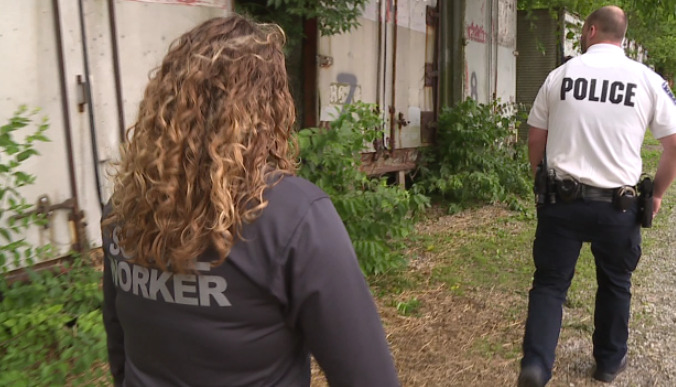

By Chief Joel F. Shults, Ed.D.
One voice that has not been loud amid the clamor to replace police response with social worker response is that of social workers. The National Association of Social Workers (NASW) has taken an official position on ending excessive force by police. In a press release the NASW referred to the shootings of two men armed with knives saying “The tragic outcomes of both most recent police encounter incidents could have been avoided by using arrest diversion, de-escalation tactic, and alternative responder strategies” before the facts have been analyzed.
Law enforcement agencies have experimented, with varying results, with diverting calls to non-law enforcement (NLE) professionals or teaming police with mental health workers or social workers. It is a practice that deserves attention and research. The proposals and existing programs must answer some basic questions:
Training
The glib statement that police “aren’t trained for this” or that the only tool we have is force is simply untrue. It is true that police officers have little mandated training in screening and intake at offices and facilities dedicated to mental health, or how to conduct substance abuse recovery programming. Conversely, how much training in dealing with extremely agitated, armed, psychotic persons in a decidedly non-clinical setting do NLE workers have? Those who believe that de-escalation is the magic word for those charging or fleeing with weapons toward other vulnerable citizens are not dealing with the reality that police officers and experienced NLE field workers know. A study from George Washington University relates the various levels, practice, and education of those under the broad label of “social worker”.
Making the Scene Safe
NASW recommendations for worker safety include a panic button to summon police, and mobile GPS and recorders, along with ” The appropriate support may include being accompanied by a colleague or supervisor, being accompanied by law enforcement, changing the day or time of the visit, changing the site of the visit to a safer venue, or postponing the visit” – some things responding police simply can’t do to avoid danger. No one is pretending that that there are many calls that can be handled by non-law enforcement, but the calls that start with a criminal complaint or presence of a weapon will still require an armed officer.
Reporting of Crime
The confidentiality requirements and protections of mental health and social workers may preclude them from reporting other criminal activity they might encounter. Mandatory reporting of child abuse, and in some states domestic abuse, is clear enough. But the idea that the clientele is either/or is false. Criminal activity is an equal opportunity enterprise. Stolen property, evidence of violent crime, and other serious criminal activity may be lost to the detriment of overall public safety.
Collecting data
In those cases where both police and NLE responders are on a scene that has a peaceful resolution, will the police ever get the credit? Do we have an accurate data set on the success of calls that can be “cherry picked” by the NLE personnel? If police are taken out of the response to non-violent calls, the percentage of use of force per contact will go up and provide a skewed indicator of the success of a program. As with any social research, there will be both bias and unmeasurable variables that produce the outcomes used to seek more funding, perhaps out of the budgets allocated to law enforcement.
Responder injury and assault
According to NASW “In 2018, the Bureau of Labor Statistics found that health and social service workers were nearly five times as likely to suffer a serious workplace violence injury than workers in other sectors.” In their own safety report “Are you faced with personal safety issues in your primary employment practice? a surprising 44 percent of the respondents answered affirmatively. Thirty percent of these social workers did not think that their employers adequately addressed the safety issues.”
Screening and selecting calls
Certainly dispatchers will need to gather more and perhaps different information for the decision to transfer a call away from a police response. Response time will necessarily be different for the non-law enforcement responders, which is an advantage that allows most situations to calm or resolve prior to their arrival. If police end up being needed at a scene, their response time will be added to the NLE call out and response time. Will frequent callers decide that a police response will address their inconvenience more quickly than the NLE that responded last time? Citizens have learned that claiming “shots fired” will get police to the annoying loud party next door, so it is a question worth answering.
Antogonism
The relationship between law enforcement and NLE is affected by the pre-training attitudes and post-training culture and experience. Although both professions are occupied by persons who genuinely want to help people, the aggregate political leanings and world views are likely very different. In the field, most of these practitioners in both professions work well together, but tensions exist and will have to be resolved in alternative response programs.
Police will remain
To the idealists who believe and promote the abolition of law enforcement, an increase in the use of NLE will result in greater appreciation of law enforcement’s role in responding to dangers unknown and in protecting our NLE colleagues.